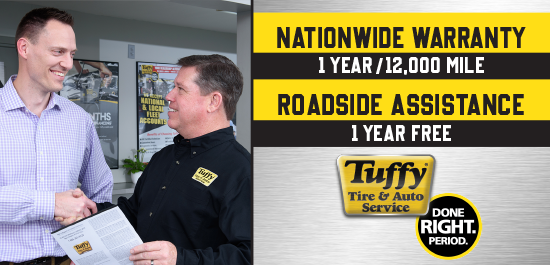| With spring’s official awakening comes the cold reality of pothole season, and the Tire Industry Association (TIA) has prepared a series of tips that tire dealers can use to help their customers cope with these menaces of the road while combating the damage done. According to the Argonne National Laboratory, potholes are formed when water seeps into cracks in the road bed. The cold temperatures of winter causes this water to freeze and expand, thus causing cracks to get wider and deeper until a full-fledged pothole is born. Kevin Rohlwing, the TIA’s senior vice president of training, points out that the torment inflicted upon tires and wheels by springtime potholes can be significant and costly. “In most cases, a tire can absorb the impact of a pothole without losing any air, but that doesn’t mean everything is fine. The best practice is to visually inspect the tire and rim as soon as possible to avoid making the situation worse -- and more expensive to fix.” Rohlwing recommends that drivers follow these tips: If you hit a pothole and then immediately notice the car pulls to one side or the steering wheel is no longer straight, take your car to a reputable automotive service provider. This is because there is a very good chance that your car has been knocked out of alignment and may have damaged front end components. According to Rohlwing, “Misalignment is one of the main reasons for premature tire wear, so the tires on your car will wear faster and irregularly until the alignment is corrected.” The next time you stop the car, inspected the tire and rim for any damage. If there is a bulge or visible cord material on either sidewall of the tire, it must be replaced immediately. If the rim flange (edge of the rim) is damaged or bent, the best practice is to purchase a new rim. Rohlwing cautions, “Just because the tire is holding air doesn’t mean it’s safe if the sidewall or rim is damaged. The assembly could fail at any time and at any speed, so drivers should remove it immediately.” If you hit a pothole and you get a flat, pull to the shoulder immediately, if possible. If a tire goes flat after hitting a pothole, it’s junk and will need to be replaced, but the rim may still be in good condition. Most vehicles can be driven on a completely flat tire for a short period of time without destroying the rim. But, trying to make it to the next exit or sidestreet may damage an expensive rim, so drivers should stop the vehicle as soon as it’s safe to do so. If you’re on a road with many potholes, go slow if you can. The harder you hit the pothole, the more damage it can inflict on the sidewall and the rim, so vehicle speed is usually the determining factor. By slowly driving over a pothole, the likelihood of damage is minimal. But with every mile-per-hour increase in vehicle speed, the risk of destroying the tire increases. Slowing down for the inevitable pothole is the best way to protect the tire and rim, Rohlwing reports. |
Tuffy
Menu




